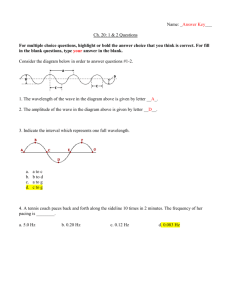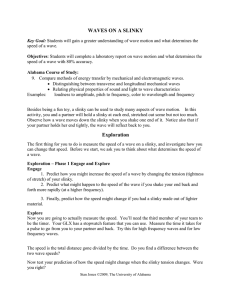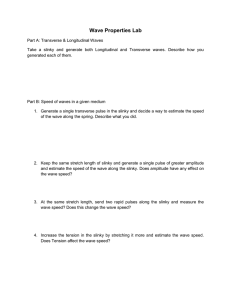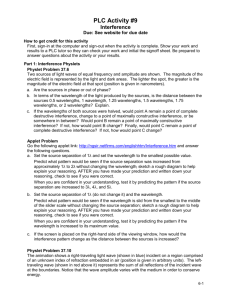Slinky wave demonstrations
advertisement
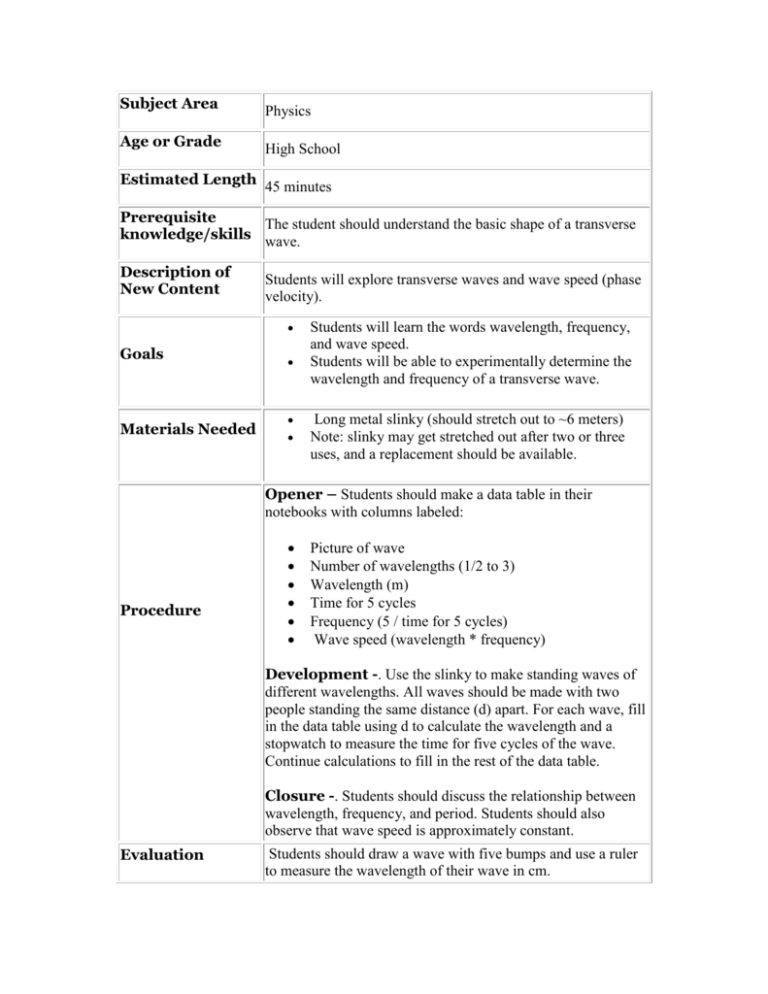
Subject Area Physics Age or Grade High School Estimated Length 45 minutes Prerequisite The student should understand the basic shape of a transverse knowledge/skills wave. Description of New Content Students will explore transverse waves and wave speed (phase velocity). Goals Materials Needed Students will learn the words wavelength, frequency, and wave speed. Students will be able to experimentally determine the wavelength and frequency of a transverse wave. Long metal slinky (should stretch out to ~6 meters) Note: slinky may get stretched out after two or three uses, and a replacement should be available. Opener – Students should make a data table in their notebooks with columns labeled: Procedure Picture of wave Number of wavelengths (1/2 to 3) Wavelength (m) Time for 5 cycles Frequency (5 / time for 5 cycles) Wave speed (wavelength * frequency) Development -. Use the slinky to make standing waves of different wavelengths. All waves should be made with two people standing the same distance (d) apart. For each wave, fill in the data table using d to calculate the wavelength and a stopwatch to measure the time for five cycles of the wave. Continue calculations to fill in the rest of the data table. Closure -. Students should discuss the relationship between wavelength, frequency, and period. Students should also observe that wave speed is approximately constant. Evaluation Students should draw a wave with five bumps and use a ruler to measure the wavelength of their wave in cm. Extensions References








